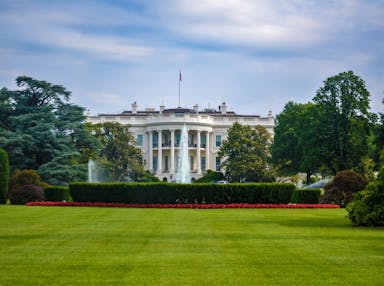
What Is a CUI Enclave? How Enclaves Can Simplify NIST 800-171 and CMMC 2.0 Compliance
Emily Bonnie
Senior Content Marketing Manager
Rob Gutierrez
Senior Cybersecurity and Compliance Manager, CISA, CCSK, CMMC RP
If your organization handles Controlled Unclassified Information (CUI), you’re likely navigating the complex requirements of frameworks like NIST SP 800-171 and CMMC 2.0. For many small and mid-sized defense contractors, the biggest challenge isn’t just meeting these cybersecurity requirements, it’s applying them consistently across sprawling IT environments. That’s no small task, especially if your data is spread out across departments, applications, and devices.
One way to make things a whole lot simpler is to build a CUI enclave: a separate, secure environment specifically for housing CUI. By limiting where CUI lives, you also limit the number of information systems, people, and processes that need to meet strict compliance requirements, making it easier to protect sensitive information and prove you're doing it right.
Keep reading to learn what a CUI enclave is, how it works, and why it’s one of the most successful strategies for meeting NIST 800-171 and CMMC Level 2 requirements without turning your entire infrastructure into a compliance project.
What is a CUI Enclave?
Controlled Unclassified Information (CUI) refers to sensitive government-related data that isn’t classified but still requires protection under regulations like DFARS 252.204-7012. This can include anything from engineering specifications and procurement records to export-controlled technical data. While it's not top secret, mishandling CUI can still pose a risk to national security and federal missions, which is why the Department of Defense (DoD) and other agencies require strict safeguards.

A CUI enclave is a logically or physically isolated portion of your IT environment where all systems that store, process, or transmit CUI are confined. Think of it like building a secure room within your larger facility, where only those with a need-to-know get access and everything inside is held to a higher security standard.
The key benefit? You only have to apply the rigorous security measures required under NIST 800-171 and CMMC Level 2 to the systems inside the enclave, not your entire organization.
A CUI enclave should include:
- Any system that stores, processes, or transmits CUI (e.g., file servers, databases, email platforms).
- Authorized users who access or handle CUI.
- Applications used to generate, view, or share CUI (CAD software, communication tools, etc.).
No CUI should enter or leave the enclave without proper encryption and security controls. This includes data transfers, backups, and printed documents.
Recommended reading

What You Need to Know About Controlled Unclassified Information (CUI): Categories, Controls, and Compliance
How does a CUI enclave work?
The main idea behind a CUI enclave is pretty straightforward: keep anything related to CUI separate from the rest of your IT environment and infrastructure. By isolating CUI in its own secure space, you can control where it lives, who can access it, and how it’s protected and handled. That makes it a lot easier to meet NIST 800-171 and CMMC 2.0 requirements without needing to bring your entire infrastructure and company into compliance.
To make a CUI enclave work, you’ll need a combination of administrative, physical, and technical controls. These controls help ensure that only authorized users can get into the enclave, and that everything happening inside is tracked, logged, and auditable.
The core components of a CUI enclave in a FedRAMP Authorized environment (such as Microsoft Azure and GCC High) are:
Network segmentation
- Firewalls, VLANs, or Virtual Private Clouds (VPCs) restrict access to enclave resources.
- Enclave traffic is tightly controlled—only authorized communication flows in and out.
- External internet access is often limited or routed through a secure proxy.
Identity and access management (IAM)
- Multi-Factor Authentication (MFA) is mandatory for all users.
- Role-Based Access Control (RBAC) ensures users only access systems/data necessary for their role.
- Account provisioning and deprovisioning is tightly managed and documented.
Enclave-only endpoints or virtual workstations
- Users may connect to enclave systems using:
- Virtual Desktop Infrastructure (VDI) or remote desktops
- Dedicated enclave endpoints with hardened configurations
- These workstations are kept separate from general-use devices to prevent CUI spillage.
Enclave-specific applications and data stores
- All systems that store, process, or transmit CUI must reside in the enclave, including:
- File servers
- Email servers
- Document collaboration tools (e.g., SharePoint in GCC High)
- Business apps that handle export-controlled data
Logging and monitoring
- Centralized logging of enclave activity (e.g., logins, file access, administrative actions)
- Integration with SIEM or logging tools for real-time monitoring and alerting
- Audit logs are protected from tampering and retained per policy
Endpoint and data protection
- Disk encryption and anti-malware tools on all enclave systems
- Removable media controls: USB devices typically blocked and tightly controlled
- Print and copy restrictions to prevent access and data extraction
Enclave boundary controls
- Boundary protection devices such as next-gen firewalls and intrusion prevention systems
- Data transfer mechanisms (e.g., encrypted file portals or secure upload tools) that are controlled and auditable
- No uncontrolled data movement in or out of the enclave
Policies and procedures
- Specific usage policies for enclave access and CUI handling
- Clear incident response plans tailored for enclave activity
- Training and acknowledgment requirements for all authorized users

Common approaches to building a CUI Enclave
What does building a CUI enclave actually look like in practice? It depends on your team, your tech stack, and your budget. While there’s no one-size-fits-all approach, most organizations end up choosing from a few tried-and-true models:
- Cloud-based enclaves: FedRAMP authorized cloud service providers like AWS GovCloud, Microsoft Azure Government, or Microsoft GCC High offer enclave-ready environments that meet FedRAMP and CMMC requirements. These enclaves typically cost $3,000–$10,000/month when managed internally, depending on the number of users, storage needs, and services used.
- VDI or remote desktops: Virtual workstations that connect to a secure backend can serve as enclaves for CUI work, while keeping data off endpoint devices. VDI-based CUI enclaves typically cost $3,000–$10,000 per month, depending on the number of users, licensing requirements, and whether you self-manage or use a cloud provider.
- Managed enclave providers: Some MSSPs and IT service providers offer CUI enclave-as-a-service, including hosting, access control, and monitoring. Estimated costs range from $3,000–$15,000/month, depending on user count and service level.
- In-house solutions: Organizations with robust internal IT teams may choose to build and manage their own enclave environments. Initial setup costs can range from $50,000–$250,000+ for hardware, licensing, and labor, with an ongoing annual cost of $25-100k or more for staff time, patching, upgrades, and compliance support.
If you choose to build an enclave in-house, you’ll need to apply the same principles discussed earlier — clear segmentation, access control, logging, policy enforcement, and user training — but with more hands-on responsibility for implementation and maintenance.

The CMMC Compliance Kit
Navigating the complexities of CMMC requirements is a daunting task, especially with the recent updates to the framework. This free CMMC kit can help simplify your readiness work with templates and checklists from our team of in-house federal compliance experts.
Is a CUI enclave worth it for NIST 800-171 and CMMC compliance?
When it comes to rigorous frameworks like NIST 800-171 and CMMC Level 2, a CUI enclave can make life a lot easier. Many of the required controls focus on things like access management, auditing, configuration, and protecting sensitive data. Keeping CUI in a dedicated environment helps you enforce those controls more consistently and with less overhead.
Take access control, for example. It’s much simpler to manage permissions and enforce least privilege when a smaller number of users only interact with CUI in a single, secure space. Logging and monitoring are more focused too, since you know exactly which systems to watch. And with fewer assets in scope, it’s easier to stay on top of patching and configuration changes. In short, an enclave gives you a smaller, more manageable environment that’s easier to secure , assess, and maintain over time.
Benefits of a CUI enclave
A CUI enclave can be one of the most effective ways to simplify your compliance journey. Here are some of the biggest advantages:
- Reduces compliance scope and complexity: Instead of securing your entire network, you can focus your efforts on the enclave. That means fewer systems to harden, fewer endpoints to monitor, and a much smaller footprint during audits. And with a more contained environment, you can implement controls faster and keep ongoing maintenance manageable
- Supports Zero Trust principles: A CUI enclave helps enforce tight access controls and the principle of least privilege, which is essential for modern information security strategies.
- Keeps CUI separate from everything else: Segmenting CUI-related work from everyday operations reduces the chance of accidental exposure or misconfiguration.
Challenges to watch out for
Even though enclaves can simplify compliance, they aren’t a magic fix. There are a few common pitfalls to avoid:
- Poor segmentation: If the enclave isn’t truly isolated, your compliance boundary won’t shrink — it’ll just get blurrier and harder to manage.
- Overengineering: Don’t overcomplicate it. Stick to what’s essential for handling CUI and avoid bringing in unnecessary tools or systems.
- Thinking the enclave is all you need: An enclave helps, but it’s not the whole solution. You still need strong policies, training, documentation, and continuous oversight to achieve and maintain compliance.
- Forgetting to review controls: Your environment isn’t static, and you’ll need to periodically monitor and update controls as your security needs and compliance requirements evolve.
- Underestimating long-term support costs: If you're relying on a vCISO, MSP, or external consultant to manage your enclave long term, those costs can add up quickly. Be sure to budget for ongoing support, not just the initial setup.
Deciding if a CUI enclave is the right choice for your needs
Thinking about whether to implement a CUI enclave? It really comes down to balancing your compliance needs with your resources, risk tolerance, and day-to-day operations. If you’re not sure whether it’s the right move, here are a few questions to help you decide:
Are you handling CUI now, or will you soon?
If you’re working on contracts that involve CUI, you’re required to comply with NIST 800-171, and likely CMMC 2.0 Level 2 as well. A CUI enclave can help simplify that process by narrowing your compliance focus.
Is CUI scattered across your systems?
The more places CUI lives, the more complicated your compliance gets. An enclave helps you rein it in by keeping sensitive data confined to one well-protected space.
Do you have the internal team to manage full-scope compliance?
Securing an entire IT environment to meet 110 controls is no small feat. If you don’t have a dedicated data security team, an enclave can help reduce the workload and lower the bar to success.
Are you aiming for CMMC Level 2 certification?
Under CMMC 2.0, Level 2 requires a formal third-party assessment. Having a clearly defined enclave makes it easier to prove you’re meeting the requirements and helps assessors do their job more efficiently, too.
How many people need access to CUI?
More users usually means more complexity and more risk. By putting CUI in an enclave, you can limit access to just the personnel who really need it.
Is your team remote or hybrid?
If your users are working from home or on the go, keeping CUI inside a virtual enclave (like a VDI environment) makes it easier to control access and prevent data from landing on unmanaged devices.
Are you trying to control costs or simplify audits?
A well-designed enclave can reduce your compliance footprint, cut down on duplicated controls, and streamline audits. In many cases, it’s more cost-effective than trying to secure your entire environment.

Safeguard CUI and simplify your compliance efforts with Secureframe
A CUI enclave is one of the most effective ways to simplify compliance with NIST 800-171 and CMMC 2.0. By isolating the systems and users that interact with CUI, you can reduce risk, lower audit scope, and focus your security efforts where they matter most.
Secureframe further simplifies compliance by combining expertise, automation, and comprehensive support. We've helped companies achieve compliance with federal frameworks like CMMC and NIST 800-53 up to 70% faster.
- Automated monitoring and evidence collection: Secureframe integrates with your existing tech stack, including AWS GovCloud, Microsoft GCC High, Azure Government, and Entra ID to automatically collect evidence and continuously monitor your tech stack for nonconformities.
- Simplified document management: Generate your SSP, POA&M, and SPRS score to simplify control documentation and remediation tracking. You can also access a library of policy and procedure templates created by federal assessors to customize to your organization.
- Trusted partner network: Our Partner Network includes trusted 3PAOs, C3PAOs, and RPOs that can support CMMC, FISMA, FedRAMP, and other federal assessments.
- Federal compliance expertise: Secureframe’s dedicated, world-class support team of former FISMA, FedRAMP, and CMMC assessors and consultants guide you through federal readiness and keep the platform up-to-date on the latest changes to federal compliance requirements.
- In-platform training: Deliver in-platform, proprietary employee training that meets CMMC and other federal requirements including insider threat, information spillage, anti-counterfeit training, and role-based training such as secure coding.

Learn more about why Secureframe is the leader in federal compliance by scheduling a demo with a compliance expert.
Use trust to accelerate growth
FAQs
What is a CUI enclave?
A CUI enclave is a secure, isolated environment designed to store, process, and transmit CUI data. It helps organizations in the Defense Industrial Base (DIB) meet requirements under frameworks like NIST 800-171 and the Cybersecurity Maturity Model Certification (CMMC) by limiting the scope of systems that must be secured—making compliance more scalable and easier to manage.
What are the 3 levels of CUI?
CUI isn’t formally divided into “levels,” but it is categorized based on CFR (Code of Federal Regulations) authorities and organizational handling requirements. Informally, some refer to:
- CUI Basic: Requires standard safeguarding per NIST 800-171.
- CUI Specified: Requires enhanced protections defined in specific laws or regs.
- Classified Information: Not considered CUI; governed separately under different rules.
What is a classified enclave?
A classified enclave is a secure IT environment used to handle classified national security information, which is separate from CUI. Unlike a CUI enclave, a classified enclave must meet stricter government security standards (like those defined in NISPOM) and is used in DoD contracts that involve classified rather than unclassified but sensitive data.
Who has access to CUI?
Only individuals who have a lawful government purpose and a need-to-know can access CUI data. For DoD contractors, this typically includes vetted employees who have completed training on CUI handling procedures. Access must be controlled and logged, especially in CUI enclaves.
What is a CMMC enclave?
A CMMC enclave is another term for a CUI enclave built specifically to meet Cybersecurity Maturity Model Certification requirements, especially at Level 2. It allows organizations to isolate CUI within a clearly defined boundary, making it easier to secure critical functions, respond to security incidents, and pass C3PAO assessments, while keeping the rest of the environment out of scope.

Emily Bonnie
Senior Content Marketing Manager
Emily Bonnie is a seasoned digital marketing strategist with over ten years of experience creating content that attracts, engages, and converts for leading SaaS companies. At Secureframe, she helps demystify complex governance, risk, and compliance (GRC) topics, turning technical frameworks and regulations into accessible, actionable guidance. Her work aims to empower organizations of all sizes to strengthen their security posture, streamline compliance, and build lasting trust with customers.

Rob Gutierrez
Senior Cybersecurity and Compliance Manager, CISA, CCSK, CMMC RP
Rob Gutierrez is an information security leader with nearly a decade of experience in GRC, IT audit, cybersecurity, FedRAMP, cloud, and supply chain assessments. As a former auditor and security consultant, Rob performed and managed CMMC, FedRAMP, FISMA, and other security and regulatory audits. At Secureframe, he’s helped hundreds of customers achieve compliance with federal and commercial frameworks, including NIST 800-171, NIST 800-53, FedRAMP, CMMC, SOC 2, and ISO 27001.